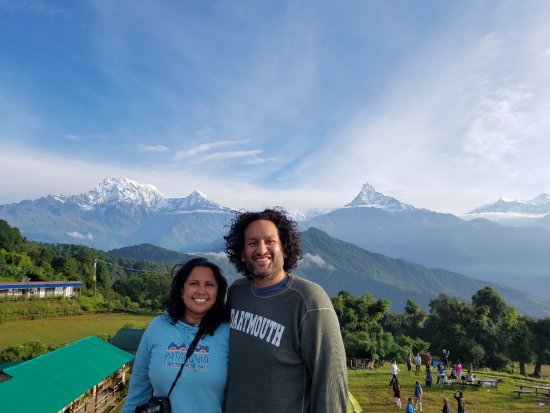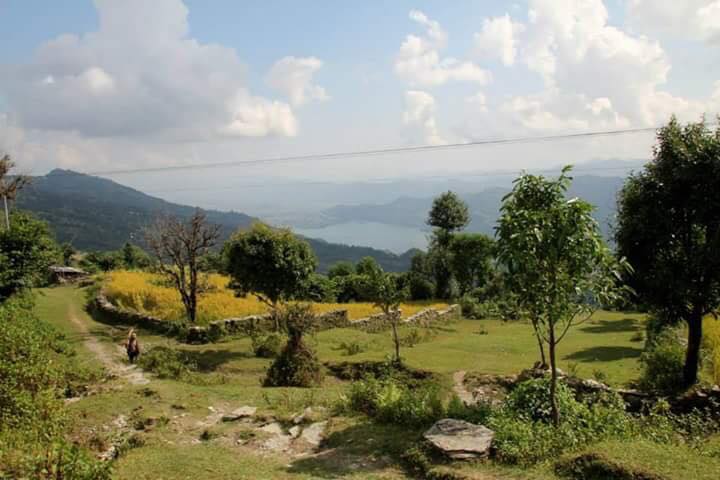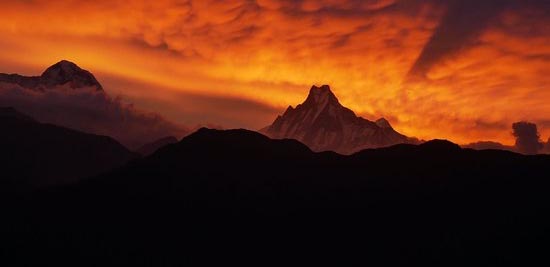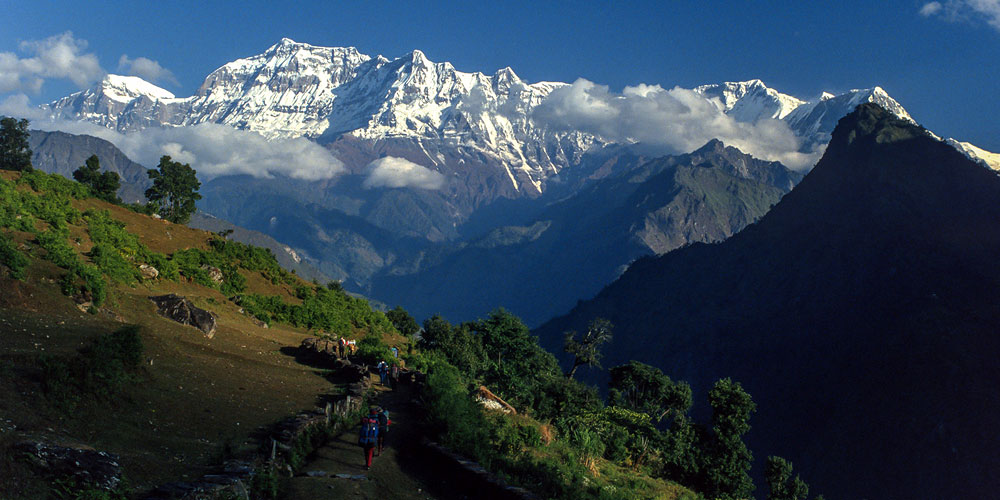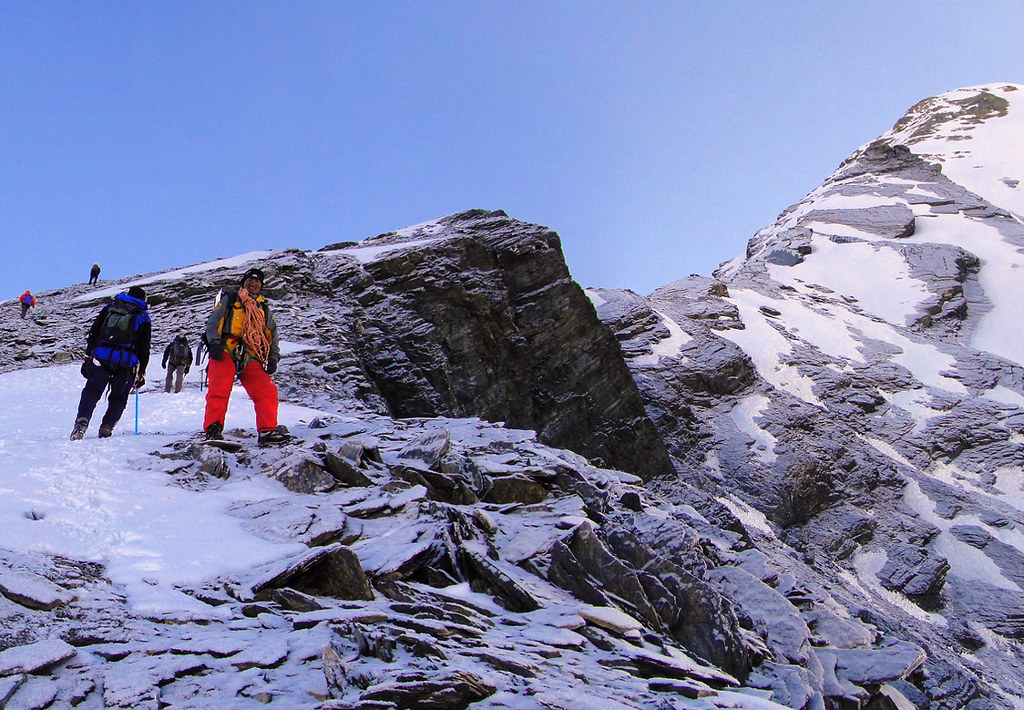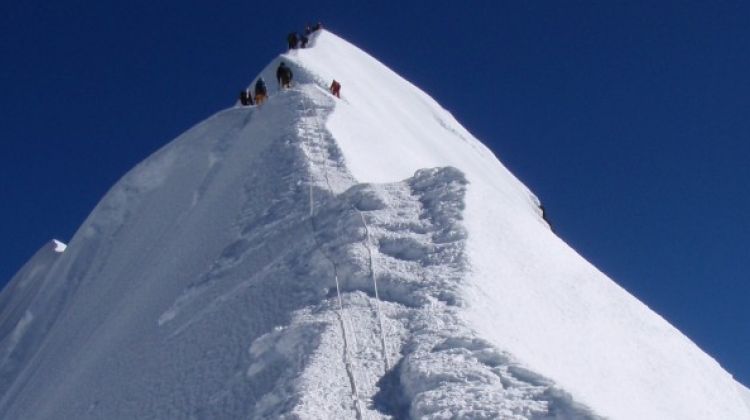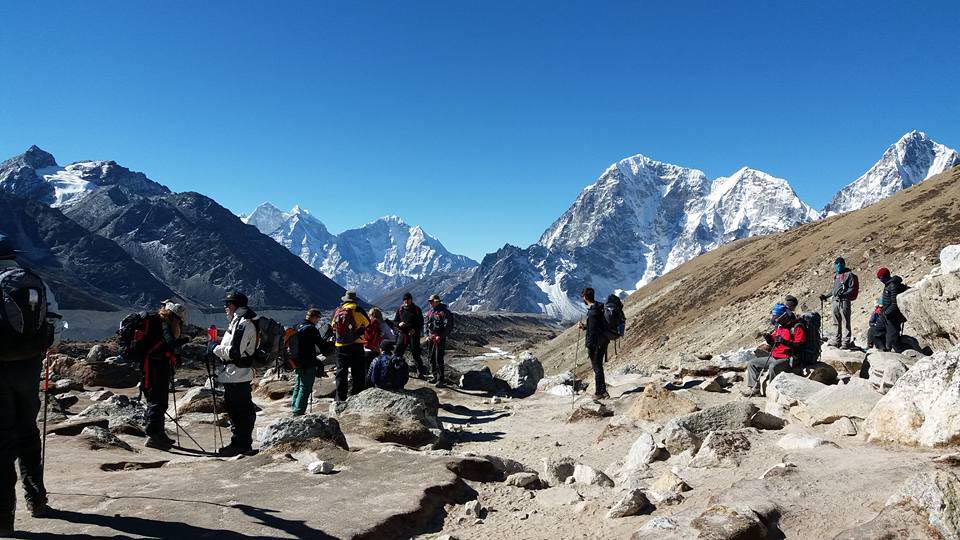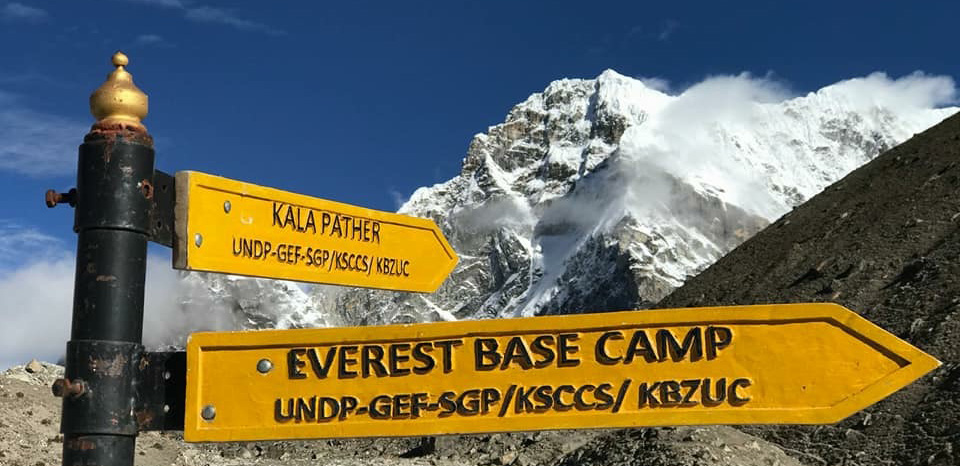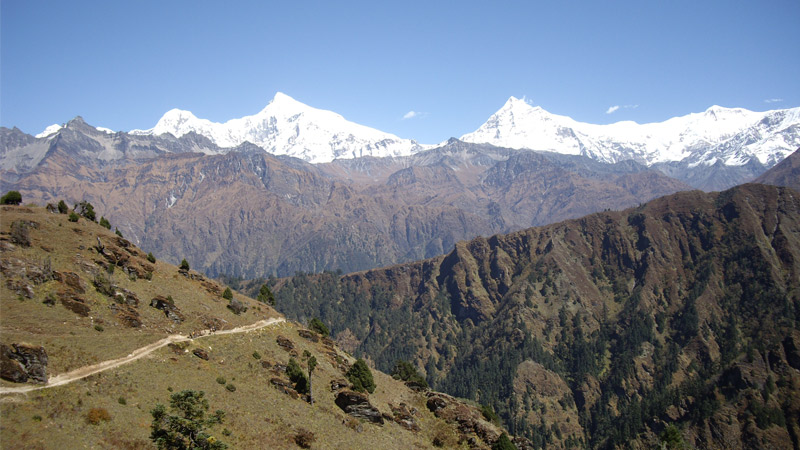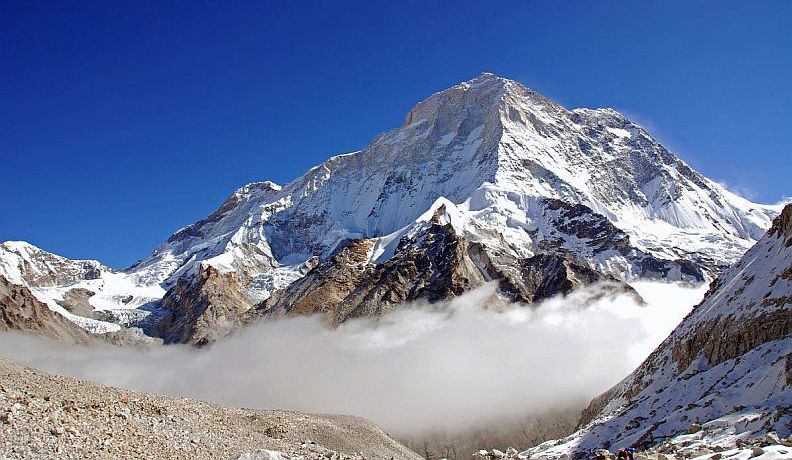Dhampus Sarangkot Trek
Dhampus Sarangkot Trek is short hiking trek around Pokhara valley. Sarangkot is just above Pokhara city and is a popular destination for viewing magnificent views of Himalayas. Pokhara is a phenomenal place of natural beauty; lies in central Nepal, situated at an altitude of 900m from the sea level and 200km west of Kathmandu valley. Sarangkot hill is also famous for sunrise, sunset and mountain view. Sarangkot lies at an elevation of 1590m to the northwest of Pokhara. It has panoramic mountain views from Dhaulagiri and across the Annapurnas to Manaslu, as well as south over the Pokhara valley.
Dhampus is the beautiful village settled by most of the Gurung community. It is also the gateway to the Annapurna Circuit, a popular trail in the Himalayas. Dhampus Sarangkot trek is an ideal trek for the first-time visitor and unexperienced trekkers and for the travelers who have limited time to experience the trekking of Nepal. From Dhampus and Sarangkot, you can see high peaks of Annapurna mountains range and varied landscape with different culture and tradition. Accommodation and meals are easily available in this region. Ethnic culture, spectacular mountain view, beautiful Gurung villages, Buddhist monastery are also the main highlights of this trek.
Day 01: Arrival in Kathmandu (1,350m/4,428ft)
Day 02: Kathmandu Vally Sightseeing .
Day 03: Drive to Pokhara(6-7hr)
Day 04: Drive to Phedi and trek to Dhampus
Day 05: Trek to Sarangkot
Day 06: Trek down to Phewa lake
Day 07: Drive back to Kathmandu
Day 08: Departure day
Day 01 : Arrival in Kathmandu (1300m/4264ft)
A representative from HSA will pick us up from the airport and take you to your hotel for Overnight in Kathmandu.
Day 02 : Kathmandu Valley Sightseeing(4-6hr)
You will be Proceed on to Boudhanath Stupa ,Patan Darbar Square ,Pasupatinath Temple and Swyambhunath Stupa , The Kathmandu valley comprises the three ancient Royal cities of Patan, Bhaktapur and Kathmandu having their own palaces and ornate palace squares each listed as World Heritage sites.
- Boudhanath Stupa, Lies about 6 km to the east of downtown Kathmandu and is the largest stupa in the valley. It looms 36 meters high and presents one of the most fascinating specimens of stupa design. Boudhanath is also known as Khasti, or dew drops, after an account that builders had to use dew to mix the mortar as Kathmandu was suffering from a severe drought during the construction of Bouddhanath.
- Pasupatinath Temple, Pashupatinath is one of the most sacred Hindu shrines in the world and lies 5 km east of the city center. The richly-ornamented pagoda houses the sacred Linga, or phallic symbol, of Lord Shiva. Chronicles indicate the temple’s existence prior to 400 AD. Devotees can be seen taking ritual dips in the holy Bagmati River flowing beside the temple.
- Patan Darbar Square, Patan Durbar Square is an enchanting combination of palace buildings, artistic courtyards, and graceful pagoda temples. The former royal palace complex is the center of Patan’s religious and social life, and houses a museum containing an array of bronze statues and religious objects. One remarkable monument here is a 17th-century temple dedicated to the Hindu god Krishna, built entirely of stone.
- Swayambhunath Stupa, The Monkey Temple (World Heritage Site) Watches over the valley from the top of a hillock on its western side. The huge stupa is one of the holiest Buddhist sites in Nepal and its establishment is linked to the creation of the Kathmandu Valley out of a primordial lake. Swayambhu is also known as Samhengu and the Monkey temple because of the countless monkeys living in the premises
Included Meals: Breakfast
Day 03: Drive to Pokhara (200kms / 6-7 hrs)
Morning drive to Pokhara valley , famed for its emerald lakes and awesome snow peaks looming overhead. Transfer to your hotel. Rest of the day is free. Overnight at your hotel in Pokhara.
Included Meals : Breakfast
Day 04: Drive to Phedi and trek to Dhampus (1,750m.) – 3/4hrs Trek.
After breakfast, we drive about half an hour from hotel to Phedi.Then, we start our trek ascending to Dhampus village for 3/4 hours.On the way, We pass through beautiful rice terrace, settlement and green forests.Overnight in Dhampus.
Included Meals: Breakfast, Lunch and Dinner
Day 05: Trek to Sarangkot (1,590m) 3- 4 hrs Trek.
After breakfast,we continue our trek to Sarangkot.we get oppourtunity to explore rice paddies field, hills, landscapes and beautiful views of the Himalayan ranges. Sarangkot hill is famous for sunrise/sunset view/mountain view.At an elevation of 1590m,Sarangkot is perched on a high ridge to the northwest of Pokhara and has panoramic mountain views from Dhaulagiri and across the Annapurnas to Manaslu,as well as south over the Pokhara Valley.Overnight at lodge in Sarangkot.
Included Meals: Breakfast, Lunch and Dinner
Day 06: Trek to Phewa Lake (2 – 3 hrs) Trek
Early in the morning,we enjoy glorious sunrise view and mountain views from Sarangkot. After breakfast, we start our trek descending downhill with magnificent mountain view and Pokhara city. Overnight at hotel in Pokhara. you can walk around the lake in the evening.
Included Meals: Breakfast and Lunch
Day 07: Drive back to Kathmandu (200kms / 6-7 hrs)
After breakfast, commence your return journey back to Kathmand. In the evening, you are invited to join with us for traditional cultural dinner as a successful Trek completion. Overnight at your hotel in kathmandu.
Included Meals: Breakfast and Dinner
Day 08: Departure Day
Our Driver will Drop you at International Airport to connect the international flight.
Included Meals: Breakfast
Cost Included
- Airport Drop and Pick up.
- 3 – Star Category hotels in Kathmandu and Pokhara including Breakfast.
- Teahouses/Lodge Accommodation including Breakfast, Lunch and Dinner during the Trek.
- Sightseeing in Kathmandu world heritage Sites.
- Kathmandu – Pokhara – Kathmandu transportation by Private Car.
- An experienced English – speaking trekking guide for trekking and Sherpa porters to carry luggage (2 trekkers :1 porter) including their salary, insurance, equipment, food and lodging.
- Farewell dinner at the end.
- All necessary paper work and permits (ACAP, Trekking permit).
- A comprehensive medical kit.
- All government and local taxes.
Cost Excluded
- Nepal Visa fee (bring accurate USD cash and two passport photographs).
- Extra night accommodation in Kathmandu and Pokhara.
- Lunch and Dinner in Kathmandu and Pokhara.
- Tour Guide and Entrance Fees for Sightseeing
- Travel and rescue insurance
- Personal expenses (phone calls, laundry, bar bills, battery recharge, extra porters, bottle or boiled water, Tea, Coffee, hot and Cold drinks, etc)
- Tips for guides and porters
This list is a guideline to help you pack for your adventure. Also, understand that the items listed below will vary a little according to the season and the trek duration. The weight limit for your luggage is 33 pounds or 15 kg. Remember that your luggage will be carried by your porter but you are required to carry a day-pack (with your valuables or anything important) on your own. We also suggest that you pack only what is necessary.
Important Documents And Items
- Valid passport, 2 extra passport size photos, airline tickets
- Separate photocopies of passport, visa form (easily obtained at Kathmandu airport), proof of insurance
- Dollars, pounds or Euros in cash for purchasing Nepalese visa at Kathmandu airport, for paying for restaurants and hotels, for gratuities, snacks, and to purchase your own drinks and gifts
- Credit cards, Bank/ATM for withdrawing funds from cash machines (bring a photocopy of your cards), traveler’s checks, etc.
Head
- Bandana or headscarf,
- Warm hat that covers your ears (wool or synthetic)
- Headlamp with extra batteries and bulbs
- Sunglasses with UV protection
- Prescription sunglasses (if required)
Upper Body
- Polypropylene shirts (1 half sleeve and 2 long sleeves)
- Light and expedition weight thermal tops
- Fleece wind-stopper jacket or pullover
- Waterproof (preferably breathable fabric) shell jacket
- Down vest and/or jacket
- Gore-Tex jacket with hood, waterproof and breathable
Hands
- 1 pair of lightweight poly liner gloves.
- 1 pair of lightweight wool or fleece gloves
- 1 pair of mittens, consists of 1 Gore-Tex over mitt matched with a very warm polar-fleece mitt liner (seasonal)
Lower Body
- Non-cotton underwear briefs
- 1 pair of Hiking shorts
- 1 pair of Hiking trousers
- 1 pair of lightweight thermal bottoms (seasonal)
- 1 pair of fleece or woolen trousers
- 1 pair of waterproof shell pants, breathable fabric
Feet
- 2 pairs of thin, lightweight inner socks
- 2 pairs of heavy poly or wool socks
- 1 pair of Hiking boots with spare laces (sturdy soles, water resistant, ankle support, “broken in”)
- 1 pair of trainers or running shoes and/or sandals
- Cotton socks (optional)
- Gaiters (winter only), optional, “low” ankle high version
SleepingRucksack And Travel Bags
- 1 medium rucksack (50-70 liters/3000-4500 cubic inches, can be used for an airplane carryon)
- 1 large duffel bag
- A small daypack/backpack for carrying your valuables, should have good shoulder padding
- Small padlocks for duffel-kit bags
- 2 large waterproof rucksack covers (optional)
Medical
- Small, personal first-aid kit.
- Aspirin, first-aid tape, and plasters
- 1 skin-blister repair kit
- Anti-diarrhea pills
- Anti-headache pills
- Cough and/or cold medicine
- Anti-altitude sickness pills: Diamox or Acetylzolamide
- Stomach antibiotic: Ciprofloxacin, etc.
- Water purification tablets or water filter
Toiletries
- 1 medium-sized quick-drying towel
- Toothbrush/paste (preferably biodegradable)
- Multipurpose soap (preferably biodegradable)
- Deodorants
- Nail clippers
- Face and body moisturizer
- Female hygiene products
- Small mirror
Personal Hygiene
- Wet wipes (baby wipes)
- Tissue /toilet roll
- Anti-bacterial handwash
What type of shape do I need to be in, is this trip for me ?
Dhampus – Sarankot trek is suitable for any Age of people thus no previous experience is required. Some physical fitness programs such as running, swimming, hiking is recommended before you embark on your journey.
Is it possible to reserve a trip now and pay a deposit later or do I Have to pay a deposit at booking/reservation ?
Yes ! The trip will be confirmed only when we receive the completed final booking form and a 30% deposit payment. You can pay the balance of the money when you arrive in Kathmandu.
Will somebody come to pick me up from the airport upon my arrival ?
Yes, our airport representative from himalayan Sanctuary adventure will be there to greet you at the airport. They will be displaying your name outside the arrival terminal than you will be transferred to your hotel for overnight.
What sort of accommodation can I expect in Kathmandu, Pokhara and in trekking ?
We use standard rooms at 2- star Category hotels in Kathmandu and Pokhara including Breakfast . Along the trekking routes, teahouses/lodges generally provide basic clean facilities with a mattress and a quilt or blanket. We recommend you to have sleeping bags, it is a good idea to always have your own sleeping equipment. In teahouses, food will be prepared in the kitchen, which you should not enter without permission.
Where do we go to toilet along the trail ?
Wherever possible we utilize the toilet facilities provided by the tea houses/lodges on the trail. However, in case of emergency trekkers are recommended to find a private, scenic spot!
What is the best season for this trekking ?
Our trekking season extends March, April, May and August, September , October, November. By the end of September through to December, the weather is usually stable with mild to warm days, cold nights. February, March, April, May, October, November is the best time .
Is the food in the mountain prepared to international standard in terms of safety ?
Yes, the food is very safe during the trekking but we recommend you to eat vegetarian and local food.
What if I am very sick in the mountain ?
Guides carry local sim cards both Nepal Telecom and Ncell in order to update whereabouts and the situation of every client. During the time of emergency, our guides are alert and keep updated to head office in Kathmandu that is available 24 /7 to arranging from horse to mules or helicopters in the must needed cases especially when the client is seriously sick in the mountain and needed to be hospitalized.
Can I obtain a visa for Nepal upon arrival at the airport ?
Yes, you can obtain a visa easily upon your arrival at Tribhuwan International Airport in Kathmandu. Tourist Visa with Multiple Entry for 30 days can be obtained by paying the US $ 40 or equivalent foreign currency. Similarly, Tourist Visa with Multiple Entry for 90 days can be obtained by paying the US $ 100. Please bring 2 copies of passport size photos.
How much additional money do I need per day ?
It depends on your spending habits. Generally, in Kathmandu and Pokhara you can allocate USD 10 to USD 15 for a lunch and a dinner. USD 20 to USD 30 per person a day will be enough to buy meals, bottles of water, chocolates, pay for the hot shower and a few drinks during the trekking.
Can I use credit cards in the places I visit in trekking ?
In Kathmandu and Pokhara, yes – to some extent. Once you are out of the cities, all you need is cash. Please change the currency in local Nepali Rupees before you go to the mountains
What mode of transportation do you use ?
We provide you only those options, which enhance your local experience while allowing you to travel comfortably and efficiently. We use private Private vehicles for sightseeing, city tours and pickups. Depending on the group size we use cars, minibus, vans, tourist bus to and from Kathmandu/ Pokhara.
Is water provided and is there water for drinking available at higher altitudes ? Is it filtered/boiled ?
Bottled water is easily available at the lodges and tea houses so can buy bottled water at the cost of USD 2 to USD 3 per litter. You can also drink the normal tap or spring water if you bring the purifying aid with you.
| Start Date | End Date | Price in USD | Availability | Booking | Note |
|---|
Avabillity Options
OPEN: This date is available and open for bookings. Go for it!
GUARANTEED: Guaranteed departure. Seat Available.
LIMITED: Guaranteed departure, Limited seat. You can send booking request for availability.
FULL:This date is currently unavailable. Please contact us if you are interested in traveling on this date.


